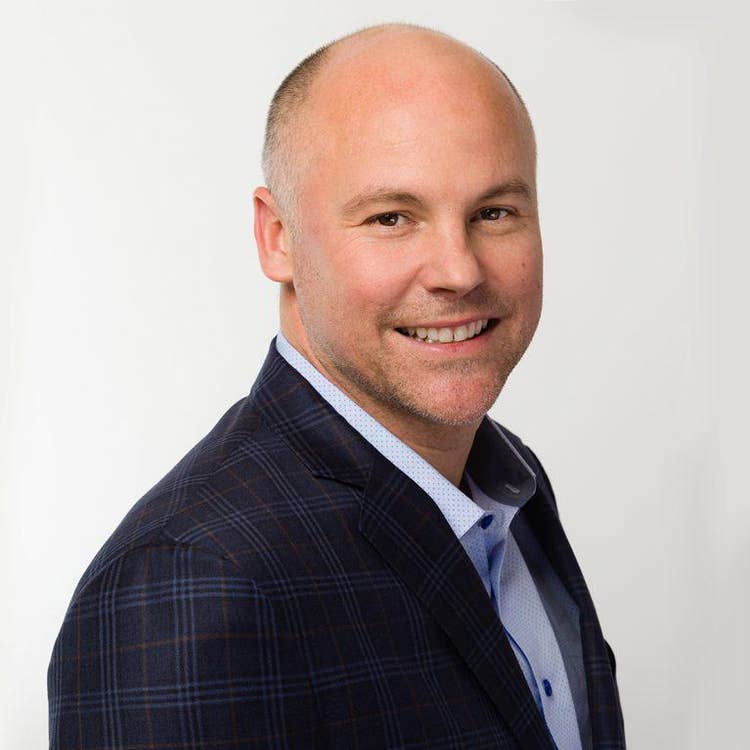Converge Technology Solutions Turns 19 Partners Into One Channel Force
‘Our goal has been to really build a very strong North American solution provider by making acquisitions,’ Converge Technology Solutions President Greg Berard tells CRN in an exclusive interview.

‘Better Together’ One Solution Provider At A Time
One of the catchphrases at Converge Technology Solutions is “better together,” which just about sums up the Toronto-based solution provider’s business model. Founded in 2018 with a goal of bringing together multiple smaller solution providers into a single organization with the ability to share geographic locations and technical expertise, it has grown into a billion-dollar public company via acquisitions of 19 channel partners.
CTS President Greg Berard took some time after Thursday’s news that CTS just closed its latest and its largest acquisition, Hewlett Packard Enterprise expert Dasher Technologies, to talk with CRN about the company’s business model and especially its acquisition strategy.
Berard said that CTS’ goal has been to build a very strong North American solution provider via acquisitions and bringing these teams together to drive more value across the combined client base. “And our whole strategy has been built on the premise that we’re going to acquire companies with real deep client relationships, real strong vendor partnerships, and unique skills and capabilities that we can all leverage together as one organization,” he said.
The discussion with Berard offers a look into a unique business model that depends on acquisitions for growth and working with established channel and technology professional to sustain that growth. To read our interview with Berard, click through the slideshow.

This is the 19th acquisition for Converge in three years. What is Converge up to?
Our goal has been to really build a very strong North American solution provider by making acquisitions and bringing these teams together to ultimately drive more value with their client base. And our whole strategy has been built on the premise that we’re going to acquire companies with real deep client relationships, real strong vendor partnerships, and unique skills and capabilities that we can all leverage together as one organization.

You mentioned “one organization.” Bringing together 18, now 19, companies into one organization seems like a lot of work with plenty of chances for integration issues. How do you handle that?
Our biggest focus is on the cross-sell, so we leave a lot of companies with their original brand name. So Dasher becomes “Dasher, A Converge Company.” We don’t disrupt any of the client engagements or client relationships they have. But we really focus on enabling their sales organization to understand the converged portfolio, understand the solutions and capabilities that we can now bring to clients. And that’s really our primary focus. We don’t focus right away on the back-end integration. It’s really about providing more value to their clients and giving their clients access to the entire converged portfolio.

So how do you find a solution provider to acquire? What’s the thought process there?
We look at a couple of different things. We look at either areas of North America where we have gaps from a regional perspective, or we look at solution providers that maybe fill a vendor gap for us. Dasher was an extremely strong HPE partner. That was one of the gaps in our infrastructure portfolio. So that is one of the reasons why we felt Dasher was a great fit for the family. And the other thing we look at is other unique skills and capabilities around our core practice areas that we’ve built, and Dasher fit in a couple of those: digital infrastructure, cybersecurity, and cloud. So they bolster some of the things we’re doing in all those areas.
And ultimately, as you know, it’s a small world out there. We find a lot of these acquisitions through relationships of either some of the senior leaders at Converge, or even some of the employees who make recommendations and references for us.

Given that, what are you missing? What are some areas that you’d like to beef up with further acquisitions?
We feel like we have a pretty strong foundation now across North America. We had a gap in Texas for a little while, but we’ve made two acquisitions there in the last six months. As I stated, Dasher gives us some good presence on the west coast. We have announced to the public that we will be making a European presence at some point in 2021. So that is a gap for us right now from a regional perspective. But ultimately, you know, we feel pretty good about where we are in North America right now, but you’ll probably see us make more acquisitions in different regions and different areas just to continue to bolster our presence and add more to the skills and capabilities. We’ve built up analytics, cloud, cybersecurity, digital infrastructure, and our managed services offerings. So you’ll continue to see us make what we call ‘tuck-in’ acquisitions that just give us more resources and more skills and continue to grow the overall technical presence of the organization.

Dasher is Converge’s biggest acquisition to date. Do you expect to make acquisitions of that size in the future, or will you focus mainly on smaller acquisitions going forward?
That’s a great question. As of right now, I think you’ll see us continue to make acquisitions of similar size as Dasher, which is the biggest [so far]. We’ve made others that are a little smaller, but we feel like the integration and the benefits that they receive are more beneficial when you target partners of that size. So for now, we’ll, we’ll continue to go down that track, but who knows what the future will bring?

Three years ago, nobody heard of Converge. How did the company start? Was it founded specifically to roll up channel partners in the company?
So Shaun Maine, our CEO, actually did this previously at a company called Pivot [Technology Solutions], and Shaun and Don Cuthbertson, our CTO, came up with a strategy actually in Don’s basement. And they [went] after resellers in the $75 million to $150 million range versus in their previous life when they went after $500 million-plus companies and tried to roll those up. So based on the experience of Sean and the leadership team, they decided that this would be a better strategy. And ultimately they decided to go after solution providers in that $75 million to $150 million range, and those partners would get more benefits by working together, get more benefits with the vendor relationships and partnerships, and do better in the marketplace. And so far, we‘ve seen that. With 19 acquisitions to date, we’ve really seen the Converge family come together. We have a saying: better together. And we actually see it in real-time. We continue to see our clients across North America engage with our different thought leaders across the practice areas. And, ultimately we’re driving more strategic conversations in a lot of our client’s accounts than we were before we had the depth and breadth of the Converge family.

CRN: How was the company funded? Was it by the founders themselves, or was there an investment fund behind it?
Berard: It was self-funded in the beginning. And then we became public on the Canadian marketplace and raised some money there as well. And that‘s how we’ve been continuing to finance the organization.
CRN: Converge just published its quarterly financials. What is the company looking at in terms of an annual revenue?
Berard: Our annual run rate is over a billion dollars now. We’re up over 1,000 employees with 400-plus technical resources throughout the organization. So zero to a billion in three-and-a-half years. So pretty successful so far.
CRN: Converge last year debuted at No. 50 on the CRN Solution Provider 500 list, which I don’t think anybody’s ever done before. Is the company profitable?
Berard: It is. You can see our financial statements from the last quarter, and we are.

So what trends are you following for 2021 that you think might impact the business overall? Not necessarily just on the acquisition side.
From a business trend perspective, obviously COVID will have an impact on how people are thinking about their businesses. We continue to see cybersecurity and cloud continue to be a focal point for a lot of the clients we‘re interacting with. Our ability to have those hybrid cloud conversations based on the strong digital infrastructure presence we have as well as the cloud capabilities we bring to the table, we feel like we’ll continue to see that in 2021.
You‘ve also seen some of the smaller clients that we interact with lean more heavily on managed services. So we’ll continue to build out our managed services portfolio and make sure we can offer our clients the option of either continuing to remain on-premises, moving to a hybrid type environment, or moving completely to the cloud and letting us manage it for them. So we believe that will continue to be an increased focus for us.